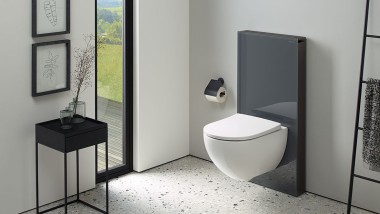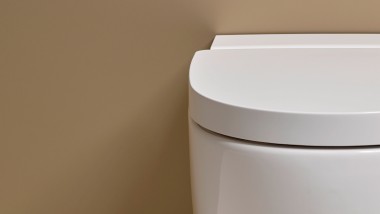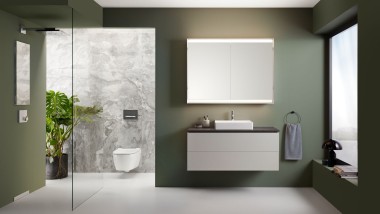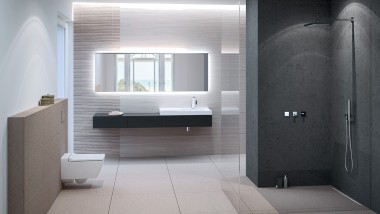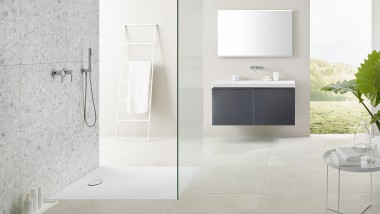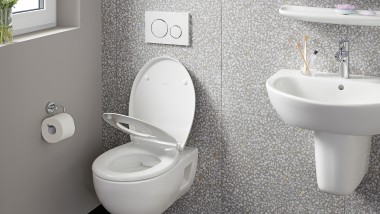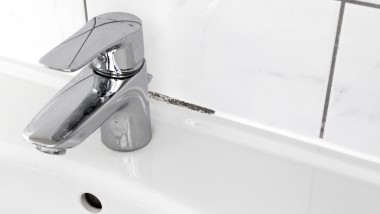Neutralising toilet odours Tips and clever solutions
Unpleasant odours in the toilet can be a real chore. Of course, smells from the person using the toilet before you are sometimes unavoidable. However, there are other sources of unpleasant odours in the bathroom in addition to the human element. With some clever tips and solutions, you can effectively prevent bad smells and ensure your bathroom or guest WC remains constantly fresh.
Where can unpleasant toilet odours come from?

There are various reasons for bad smells in the bathroom or guest WC. In addition to smells caused by using the toilet itself, excessive moisture, blocked drains and poor ventilation are all causes of unpleasant odours.
Damp places smell musty. The overflow tends to be the source of bad smells if it is not cleaned regularly. Bins and traps must be kept clean. Towels should dry quickly after use.
Regular cleaning and keeping these areas dry help minimise the build-up of odours.
How can toilet odours be neutralised? 6 tips
Tip 1: Install a toilet with an odour exctraction unit
The main reason for unpleasant smells in the bathroom is the human element. The most effective way of dealing with this is to extract the unpleasant odours where they originate from. This is where a toilet with an integrated odour extraction unit comes in. This extracts unpleasant odours directly from the WC ceramic appliance and purifies the air.
The Geberit DuoFresh odour extraction unit can be retrofitted on existing toilets equipped with a Sigma concealed cistern. The odour extraction unit is already installed on the Geberit AquaClean Mera and Tuma Comfort shower toilet models.
Tip 2: Clean the toilet regularly
When it comes to preventing unpleasant smells, cleaning the toilet area regularly is essential.
Usually, cleaning the toilet with water is sufficient in combating odours. Effective toilet cleaners are a good choice when it comes to dealing with additional dirt and deposits. Clean the toilet bowl inside and out, including underneath the flush rim. Also don’t forget the surfaces around the toilet where urine splashes can occur.
Tip: Close the WC lid when flushing so that the area around the toilet is not exposed to fine water splashes.
If the urine smell around the toilet remains – especially on older WC ceramic appliances – then this is due to residues underneath the toilet rim. Limescale and other dirt deposits can build up here. Clean underneath the flush rim with an anti-limescale toilet cleaner or cleaning agents such as citric acid or diluted acetic acid. The cleaning agent is applied with the help of the toilet brush and left to work according to the manufacturer’s specifications. Avoid cleaning sprays and wear gloves when cleaning to prevent irritation to the skin.
Here too, the same principle applies – ideally, the source of the unpleasant odours should be avoided in the first place. Rimless toilets are more hygienic due to their open design as there are fewer places for dirt and deposits to build up, which makes cleaning easier. Nonetheless, regular and thorough cleaning remains essential.
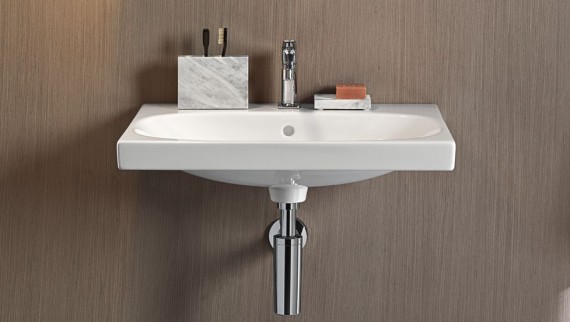
Tip 3: Check the trap or discharge pipe
Empty traps are underestimated as a source of odours. If traps become dry – for example, when they are rarely used – or if deposits prevent water from draining away, unpleasant smells can result. Traps work best when the waste water flows and the water in the pipe is replaced regularly.
If traps are blocked by hair or other deposits, you can try to remove the blockage. In many cases, a plunger can eliminate deposits in the trap effectively by alternating between pressure and suction.
How to clean the trap
Tip 4: Check seals and ceramic appliances for damage
Cracks in the WC ceramic appliance or defective seals around the toilet can result in unpleasant smells caused by draining waste water. If you find damage like this, it should be rectified as quickly as possible by a qualified person.
Tip 5: Ventilate to prevent mould formation
If moisture and heat build up in a room over a long period of time, unpleasant musty smells can occur despite ventilation. These can be prevented by ventilating the room correctly. Making a habit of quick ventilation in the toilet, bathroom or guest WC can prevent mould formation. Alternatively, let the ventilator run longer in bathrooms without windows.

Tip 6: Home remedies agaisnt toilet odours: Matches, sprays and more
Anyone wishing to leave behind a freshly smelling toilet after their visit can use household remedies as a quick fix, such as burning a match. Fragrant sprays, incense sticks and oils are also commonly used. An open bowl of salt, lemon water or freshly ground coffee beans is said to have a binding effect on odours.
Vinegar also neutralises smells. You can place a small bowl next to the toilet and dilute with a little water to minimise the vinegar smell. Alternatively, you can also use essential oils that are effective against odours, such as lemon, lavender or peppermint.
A tip from the professionals: baking powder and bicarbonate of soda are cheap and effective ways of combating odours while also cleaning the toilet. Add either of them to the toilet and let it work for a while. Baking powder and bicarbonate of soda react to dirt and also help to dissolve it.
However, while cleaning agents remove the source of the smell, such home remedies are only a short-term solution. The human source of smells is one that constantly arises. A toilet with an odour extraction unit removes unpleasant odours over the long term.
Keeping the toilet fresh

A feel-good atmosphere can be created in the bathroom by using concealed or decorative fragrances. Dried flowers with fragrances are not only nice to look at, they also give the room a pleasant smell for months at a time. Diffusers are also a very efficient method.
Toilet rolls or dry cloths can also be used as inconspicuous fragrance sources. Simply add a drop of essential oils to the inside of every toilet roll or on dry cloths placed inside the towel pile. When using oils, always remember that less is more.
If there is an unpleasant odour in the toilet, it is important to thoroughly address the problem. Regular cleaning, keeping an eye out for possible problems, small tricks and innovative solutions such as odour extraction units ensure that the room always remains fresh and inviting.






